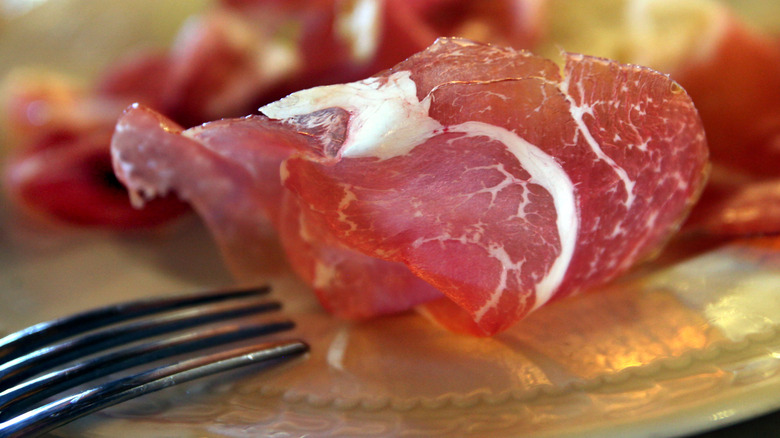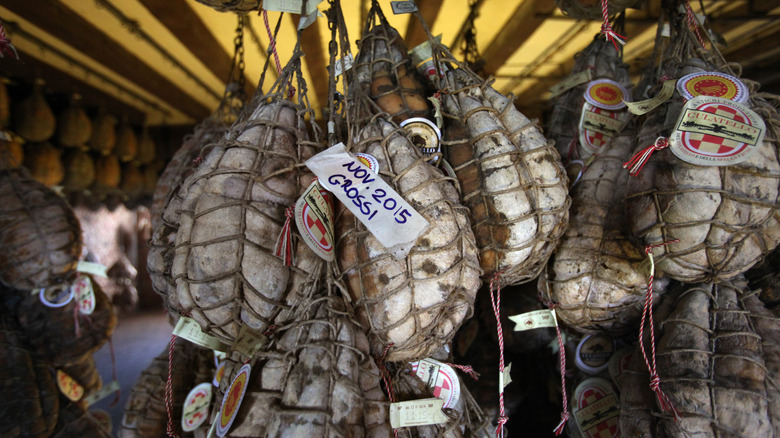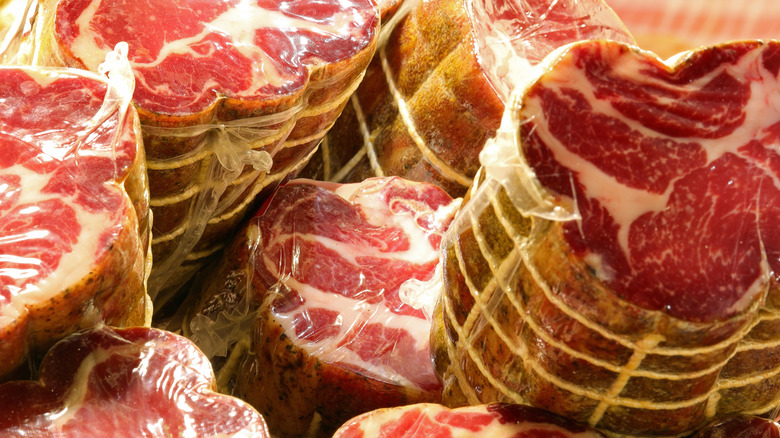Why Is Culatello So Rare?
There are many reasons why a food or beverage may be classified as rare. It could be an issue of availability, as with truffles or chanterelles, or seasonality of certain items, like ramps, scapes, and other varieties of spring onions and garlic that are only available for a few select weeks, or stone crab season. Regionality also plays a role, as with Champagne or Kölsch from Cologne, Germany.
Sure, there are substitutes and knockoffs for the latter two, with many carbonated wines and Kölsch-style beers available. However, in order to earn the distinction of true Champagne or Kölsch, it must come from a certified producer in its respective region. The same applies to culatello, an Italian cured ham that is also classified as a Protected Designation of Origin (PDO) product. Unlike Champagne or Kölsch, however, culatello was banned in the United States for decades.
Concerns over swine vesicular disease in Italy led to the initial ban, enacted in the 1960s. However, in 2013, the USDA found that the risk of the disease being introduced to the U.S. was low, and overturned the ban. Since then, cured meats from Italy have flowed into the U.S., but the time and patience required for culatello's production, along with the limited number of certified producers — just 23 across nine towns — make it more challenging to find than other cured delicacies.
What makes culatello distinct from other cured meats?
While culatello shares similarities with other cured pork legs like prosciutto di Parma or jamón Ibérico, differences in production lead to differences in taste. Culatello gets its melt-in-your-mouth quality from being wrapped in a pig's bladder and hung in a dark cellar for at least 10 months. However, the aging and curing process, combined with the bladder, are not the only factors that make culatello unique.
Originating near Parma in the northern part of Emilia-Romagna, the cold, wet environment and proximity to the Po River foster ideal conditions for the mold that develops on the casing. That mold, along with the time spent aging in a cellar, gives culatello its one-of-a-kind characteristics, which also change depending on how long each leg is aged.
These factors are extremely difficult to replicate outside the region, and while producers elsewhere can follow the steps to make their own culatello, climate-controlled versions are technically imposters. The thought and production processes are rooted in the old world, and while offshoots and variants may try to stay true to the original, there is no substitute for the real thing — at least none that will bypass the PDO designation.
Where can one find culatello in the United States?
As usual, the internet is your best bet for finding something rare, with several options of culatello available from sources like Supermarket Italy. For instance, you can get a 10-pound Levoni culatta for a cool $379.99 — around $38 per pound. Additionally, a 10-pound culatello di Zibello from Sogno Toscano retails for $830.50. So, regardless of where you find this crown jewel of salumi, be prepared to pay a hefty price.
Honestly, if you're considering spending that much cash on a beautifully cured pork leg, you might want to look into the cost of a plane ticket to Italy. Even if a restaurant in your city has authentic culatello on its menu, you can bet the upcharge will likely be equally as unkind to your wallet. That said, there are some stateside producers, like Broad Arrow Farm in Bristol, Maine, that offer their own version at a more reasonable price. However, these iterations won't carry the PDO stamp, and likely won't have the same unique qualities of the region that first put a pork leg into a pork bladder and hung it in a cave for months.



